Mengding Mountain, Sichuan - The birthplace of Chinese tea culture from the Western Han Dynasty
Mengding Mountain, Sichuan - the birthplace of Chinese tea culture from the Western Han Dynasty.
Tea is an integral part of Chinese culture, with a long and rich history. Chinese tea culture has developed for thousands of years. China's tea industry has been expanding and developing since the Tang Dynasty and has now spread worldwide. Tea has become a popular non-alcoholic beverage globally. Do you know the origin of Chinese tea culture? The answer lies in Mengding Mountain.
Today, let's delve into the birthplace of Chinese tea culture and uncover the stories behind its ancient roots. Speaking of Mount Meng (蒙山 Mengsha, also known as 蒙顶山 Mengding Mountain), there are actually two ancient Mount Meng in China. One is East Mount Meng, in the south of Shandong Province. The other is Xishan Mountain, which is in Mingshan County, western Sichuan.

Mengding Mountain Shrouded In Clouds
According to the historical book "Shang Shu - Yu Gong," Yu the Great, after finishing the water control project, made a special trip to West Mount Meng to pay respects to the heavens. West Mount Meng is an ancient and famous mountain. Both the East and West Meng Mountains are known for growing tea, but the tea produced in the western part of Sichuan is renowned worldwide and loved by tea enthusiasts of all ages. Local residents can't stop raving about the exceptional quality of Mengshan teas, with the crown jewel being Mengding tea, found at the peak of Mount Meng. And let me tell you, Mengding Tea truly lives up to its reputation with its incredibly delightful and sweet aroma. You have to taste it yourself to truly appreciate its unique flavor. Interestingly, it's said that Lu Yu, "the saint of tea," never had the chance to personally taste Mengding tea in Mount Meng, which is why it didn't make an appearance in his famous book, The Classic of Tea. But those lucky enough to try Mengding tea can't help but sing its praises.
The geographical location of Mount Mengding
Let's talk a bit about the location of Mount Mengding. It's situated on the western edge of the Sichuan Basin, right where the Qinghai-Tibet Plateau transitions into the western Sichuan plain. It's nestled between Ya'an city, also known as the "rain city," and Mingshan City. If you're in Chengdu, you'll find Mount Mengding about 110 kilometers to the southwest. And if you happen to be in Ya'an city, it's just a short 15-kilometer journey.
Origin of Name
Mengding Mountain got its name because of its "rainy and foggy weather." The Chinese character "蒙 Meng" signifies the frequent rainfall and foggy conditions. In the olden days, it was also called "Xishu Leaky Sky" as it received over 2,000 mm of rainfall annually.

Baizhang Lake In The Evening - Mengding Mountain
The Five Peaks of Mengding Mountains
Throughout the year, Mengding Mountain is veiled in clouds, boasting a mesmerizing landscape of majestic mountains, perilous peaks, and cascading waterfalls. It has become a renowned tourist destination, featuring famous peaks like Shangqing (上清)', 'Lingjiao (菱角)', 'Piluo(毗羅)', 'Jingquan(井泉)' and 'Ganlu(甘露) - the namesake of the renowned Chinese green tea Meng Ding Gan Lu. Collectively, these peaks are known as the Five Peaks of Mengding. When viewed from afar, they resemble blooming lotus flowers. The highest among them is Shangqing Peak, soaring 1,456 meters above sea level.
Nestled at the foot of Shangqing Peak is the Emperor Tea Garden ( "皇茶园 ), where Wu Lizhen personally planted seven immortal tea trees during the late Western Han Dynasty (202 BC - 8 AD). This ancient tea garden is documented on surviving stone tablets from the Han Dynasty, Ming Dynasty (1368-1644), and Qing Dynasty (1636-1912), as well as in the "Mingshan County Records." Mengding Mountain is located in Mingshan County, adding to its historical significance.
Mengdingshan Scenic Area
Mengdingshan Scenic Area is a provincial-level scenic spot in Sichuan, renowned for its constant rainfall. It's a top-notch tourist attraction, rated AAAA by the national standards. This scenic area consists of two main parts: Mount Mengshan (蒙山) and Lake Baizhang (百丈湖). Mount Mengshan, along with Emei Mountain and Qingcheng Mountain, is considered one of the most famous mountains in Sichuan Province. It's a must-visit for nature lovers and adventure seekers alike.
The Earliest Written Record of Tea Drinking in China
Sichuan is considered the earliest documented region for tea cultivation in China. The world's oldest surviving records of tea consumption can be found in Wang Bo's "童约" (Tong Yue) and the legend of Wu Li Zhen (吳理真) planting tea trees in Meng Mountain. These accounts point to Mengding Mountain in Sichuan as the birthplace of tea cultivation and production.
The term "童约" (Tong Yue) literally means "Servant's Agreement." Wang Bo, an exceptional writer during the Western Han Dynasty (206 BC-24 AD), penned Tong Yue as his most notable work, sharing his observations and experiences in Sichuan Province.
In 59 BC, when Wang Bo arrived in Pengzhou, one of Sichuan Province's 18 county-level cities, a dispute arose between a widow named Yang She and her servant. To resolve the conflict, Wang Bo drafted a contract that clearly outlined their responsibilities and corresponding compensation.
This agreement holds immense historical significance. Within the "童约" (Tong Yue), there is a passage that states, "'膾鱼炮鳖, 烹茶尽具' (preparing fish and turtles, making tea and arranging tea sets), '牵犬贩鹅, 武阳买茶' (walking dogs and selling geese, and going to Wuyang to buy tea)..." These lines provide the earliest recorded evidence of tea consumption, purchase, and cultivation in China, and even the world. Based on this record, we can conclude that Sichuan Province was the earliest region where tea was grown and enjoyed. Wuyang (now Pengshan, Sichuan Province) served as the primary tea-producing area and a renowned tea market during that time.
Wu Lizhen - the ancestor of tea planting
Wu Lizhen (吴理真, 200 BC-53 AD), a native of Yandao (in the Ming Mountain area of Ya'an, Sichuan Province) during the Western Han Dynasty, is known as Ganlu Daoist and a prominent figure in the Taoist school. He was formerly in charge of a Taoist temple on Mengding Mountain. Wu Lizhen is regarded as the world's earliest tea farmer with clear written records of domesticating and planting wild tea trees, and is also recognized as the tea pioneer of Mengding Mountain and the Master of Tea Cultivation in China.

Ancient book records Wu Lizhen and his statue on Mengding Mountain
As early as 53 BC, Wu Lizhen, a medicinal plant farmer in Mengding Mountain, accidentally discovered the medicinal value of wild tea plants while collecting herbs. He extensively searched the mountain area and found seven wild tea trees, which he later planted on Mengding Mountain. These seven tea trees thrived and produced excellent tea. Since then, Mengding Mountain embarked on a history of tea cultivation.
In the thirteenth year of Chunxi (1186), Emperor Xiaozong of the Song Dynasty (960-1279) bestowed the title of "Master of Gan Lu" upon Wu Lizhen and named the place where he hand-planted the seven immortal tea plants as the "Imperial Tea Garden." Therefore, Wu Lizhen is also known as "Master Gan Lu."

Comparison Of Brewed Mengding Teas
Wu Lizhen, the esteemed founder of Gan Lu tea, is a prominent figure in local legends and chronicles, hailed as the "tea ancestor" by the community. The Mengshan Tea History Museum houses a remarkable stone carving from the Qing Dynasty, originally preserved at Tiangai Temple on Mount Meng. This carving beautifully depicts tea branches and flowers, with Wu Lizhen at its center, indicating the long-standing tradition of tea worship. It's clear that Wu Lizhen, the visionary behind Mengding Tea, possessed knowledge beyond medicine. There is likely a treasure trove of ancient tea information waiting to be discovered.
Ganlu
In China, Gan Lu (甘露) is associated with several meanings:
- It represents sweet dew, symbolizing freshness and vitality.
- In ancient times, the descent of sweet dew was seen as a sign of peace.
- It was also referred to as "immortal water," believed to possess qualities that could grant immortality.
Why Is Mengding Mountain The Best Place For Tea Growing?
Well, it all comes down to the fantastic combination of factors that create an ideal environment for tea plants. First, we have the humid climate, which provides the plants with the right amount of moisture they need. Then, there's the unique red sandstone soil, which offers excellent drainage while still retaining enough water for the plants to thrive. This kind of soil is a result of ancient rocks gradually breaking down over time, and you won't find many places that can offer such optimal conditions for tea cultivation.
In January 1979, something truly remarkable happened in Louziyan, Chaishan, Mengshan. They discovered four ancient tea trees, each of them over a century old. These trees are absolute giants, with the longest trunk measuring an impressive 2.6 meters and a diameter of 28 cm. They have nine primary branches that stretch out in all their glory. The leaves on these branches are no joke either, reaching lengths of 8.23 cm and widths of 2.92 cm. As if that wasn't enough, these ancient tea trees even bloom with beautiful pink flowers at the end of summer. Despite growing on rocks with only a thin layer of topsoil, they managed to thrive and flourish. The staff at Mengshan Tea Farm used to carefully pluck the buds and leaves from these incredible trees to create tea. And let me tell you, this tea is something special. It produces a clear soup with a taste that is truly unique and unforgettable. It's an experience you won't get from your ordinary garden tea, that's for sure.

Imperial Tea Garden
History of Mengding tea
Mengding tea, known for its production in Mengding Mountain, Ya'an, Sichuan, has a fascinating history that dates back 2,000 years to the Western Han Dynasty.
In ancient times, the tea-picking rituals in Mengshan were filled with solemnity and religious reverence. As recorded in the New Annals of Mingshan County, the county magistrate would carefully select a propitious day when the tea buds began to sprout in the spring, usually around Tomb-Sweeping Day. On this special day, the county magistrate and accompanying officials would dress in their finest formal attire. Joined by local monks, they played melodic tunes, recited Buddhist scriptures, and set off firecrackers to pay homage to the revered "Holy Tea" trees. Once the ceremony concluded, they commenced the meticulous task of plucking only 360 sacred tea leaves. These precious leaves were then entrusted to a skilled tea artisan selected from the local monks for processing. Meanwhile, the remaining monks engaged in continuous meditation, chanting Buddhist scriptures throughout the process. Once the tea leaves were dried and ready, they were carefully stored in a silver bottle sealed with a yellow ribbon and red seal. These prized tea leaves were then dispatched directly to the capital, the Forbidden City, for royal ceremonies and sacrifices. The journey from many provinces and cities to the palace required special care to ensure the excellent quality of the tea leaves. It was during this time that the royal tea for the royal family was meticulously prepared. This grand and laborious tea-picking ceremony persisted until the Qing Dynasty (1636-1912).
Mengding Tea and its Connection to Buddhism

Tea Ceremony At The Imperial Tea Garden
Mengding Tea has a deep-rooted association with Buddhism, particularly during the Tang Dynasty (618-907) and the Song Dynasty (960-1279). During this period, Mengding Tea was exclusively cultivated and owned by temples, becoming known as the revered "temple tea." Allow me to share a heartwarming story. Legend has it that in ancient times, there was an elderly monk residing in Mount Meng (Mengding) who suffered from a severe illness. Despite trying numerous medications, his condition showed no improvement. One fortunate day, a wise old man passing by advised him that when the spring thunderstorms arrived around the vernal equinox, he should harvest Mengding tea and brew it with water from Mengding. Trusting in this advice, the old monk followed the instructions and, miraculously, his health gradually restored.
An extraordinary tea known as 'Sparrow Tongue' tea, grown in Mengding Mountain, was exclusively used for worshipping Buddha Sakyamuni in ancient times. Its significance in spiritual rituals added to its revered status.
Mengding tea is the collective term for teas cultivated in the scenic Mengding Mountains of Sichuan Province. Among the different varieties, 'Ganlu tea' and 'Huang Ya (Yellow Bud Tea)' are regarded as the finest in quality. In ancient times, Mengding tea held tremendous value and was considered a precious commodity. Throughout history, countless cultural luminaries in China expressed their admiration for Mengding tea through poems and articles, celebrating its exquisite flavors and qualities.
Liu Yuxi, a renowned minister, litterateur, and philosopher of the Tang Dynasty, is hailed as the "master of poetry." In his poem "西山蘭若試茶詩" (Testing Tea on the Western Mountain Orchid Pavilion), he vividly describes the process of preparing Mengding tea and other tribute teas. These teas were carefully wrapped in white paper, bearing the distinguished scarlet seal of the government, and then sent on a journey spanning thousands of miles to the imperial capital. Similar ancient works heaped praise upon Mengding tea, extolling its virtues and unique qualities. Even Bai Juyi, a widely celebrated poet in China, expressed his admiration in his poem "琴茶詩" (Guqin and Tea), stating, "琴裡知聞唯淥水,茶中故舊是蒙山" (In the sound and scent of the guqin, only Lushui water is known; in the realm of tea, the beloved is none other than Mengding Mountain). Through this beautiful verse, he not only mentioned and praised Mengding tea, comparing it to the famous Chinese song Lushui, but also regarded it as a lifelong companion, longing for an everlasting bond. Mengding Tea truly holds a special place in the hearts of these revered poets!

The Stone Statue Of Liu Yuxi (772 - 842) And His Representative Works
Mengding Tea in Modern Times
Since the founding of the People's Republic of China (PRC) in 1949, Mengding tea has received well-deserved recognition and acclaim. It has proudly earned a spot among the top ten famous teas in China. To preserve and enhance the traditional varieties of Mengding tea, diligent efforts have been made. Notable examples include Gan Lu (Sweet Dew), Shihua (Stone Flower), Huangya (Yellow Bud), MiYa (Rice Bud), Wanchun Yinye (Wanchun Silver Leaf), and Yuye Changchun (Jade Leaf Long Spring), among others. These varieties have been carefully preserved and improved upon, ensuring the continuation of Mengding tea's legacy in the modern era.
Mengding Huangya tea (Mengding Yellow Bud Tea) tea became the representative tea from the Mengding Mountain area in the early 1950s. However, since the 21st century, 'high-quality green tea' such as 'Mengding Ganlu Tea' has been the main tea in the Mengding Mountain area, and the output of yellow tea has declined. Even so, 'Mengding Yellow Bud Tea' is still produced, and it is highly sought after by yellow-tea lovers all over the world.
The golden age of Mengding tea can be traced back to the Tang and Song Dynasties. It was during this period, starting from the first year of Emperor Xuanzong of the Tang Dynasty (AD 724), that Mengding tea was first chosen as an esteemed tribute. Remarkably, it continued to serve as a tribute for over 1,200 years, spanning the Qing Dynasty and beyond. This distinguished tea was cultivated from the precious leaves of seven ancient tea trees planted by Wu Li Zhen himself. As a testament to its significance, the Mengding Five Peaks were eventually designated as a restricted area exclusive to the royal court during the Qing Dynasty. The seven sacred tea trees were enclosed within stone fences, forming what is now known as the "Royal Tea Garden." Miraculously, this historic treasure has been carefully preserved throughout the years, standing as a testament to the rich heritage of Mengding tea.
In summary, Mengding Mountain's contribution to Chinese tea culture is immense. The mountain's cultural significance and its influence on tea production make it a significant landmark in the world of Chinese tea.


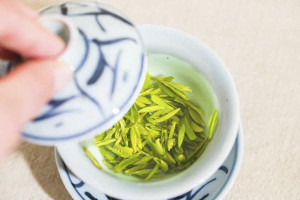
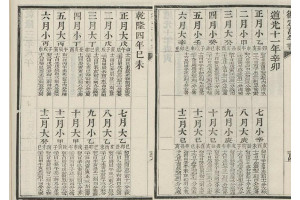
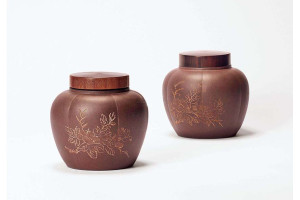
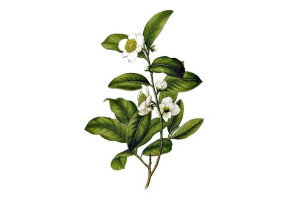
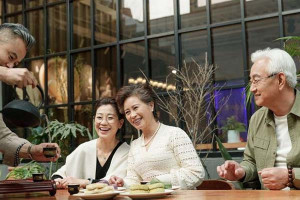
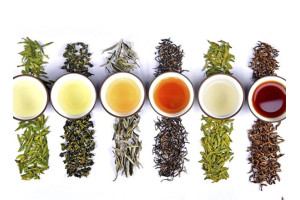
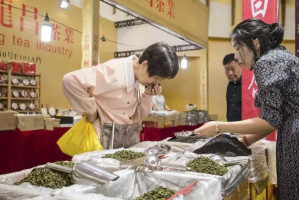
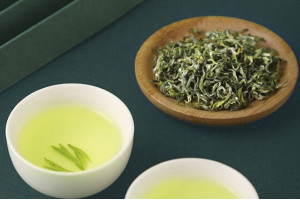
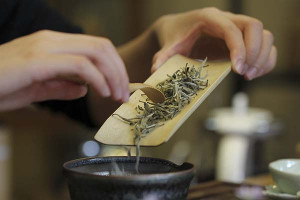
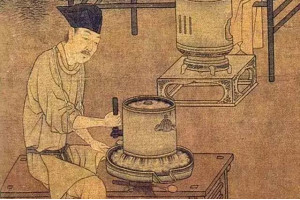
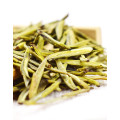

Leave your comment